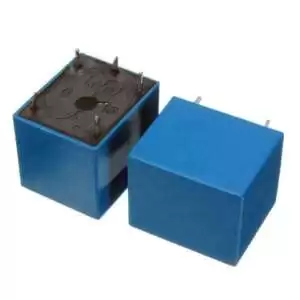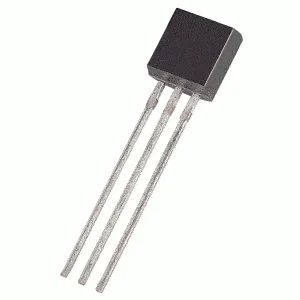General Purpose Relay SPDT (1 Form C) 5VDC Coil 10A Through Hole 5 Pin
5VDC General Purpose Relay SPDT (1 Form C), 10A contact rating, through-hole mounting with 5 pins. Ideal for switching circuits in various applications.
11.00 EGP
Buy NowThe General Purpose Relay SPDT (1 Form C) 5VDC Coil 10A Through Hole 5 Pin is a versatile and reliable component designed for efficient switching in various applications.
Relay Pin Configuration
| Pin Number | Pin Name | Description |
| 1 | Coil End 1 | Used to trigger(On/Off) the Relay, Normally one end is connected to 5V and the other end to the ground |
| 2 | Coil End 2 | Used to trigger(On/Off) the Relay, Normally one end is connected to 5V and the other end to the ground |
| 3 | Common (COM) | Common is connected to one End of the Load that is to be controlled |
| 4 | Normally Close (NC) | The other end of the load is either connected to NO or NC. If connected to NC the load remains connected before the trigger |
| 5 | Normally Open (NO) | The other end of the load is either connected to NO or NC. If connected to NO the load remains disconnected before the trigger |

Specifications:
- Coil Power: 5V DC
- Pin Out: 5 Pin – Coil – COM – NC – NO
- Nominal Coil Power: 0.36w, 0.45W
- Contact Capacity: 10A 250VAC || 10A 30VDC
- Insulation Resistance: 100MΩ.500VDC
- Operate Time: 15ms/10ms
- Terminal Type: PCB
- Contact Load: High Power
- Product name:: 5V DC Electrical Relay
- Contact Ratings: 1A,1C
- Contact Material: Silver Alloy
- Size: Miniature
- Protect Feature: Sealed
- Dimensions:1.80cm x 1.50cm x 1.50cm
Applications of Relay
- Commonly used in switching circuits.
- For Home Automation projects to switch AC loads
- To Control (On/Off) Heavy loads at a pre-determined time/condition
- Used in safety circuits to disconnect the load from the supply in the event of failure
- Used in Automobiles electronics for controlling indicators glass motors etc.
2D model of the Relay












Reviews
There are no reviews yet.